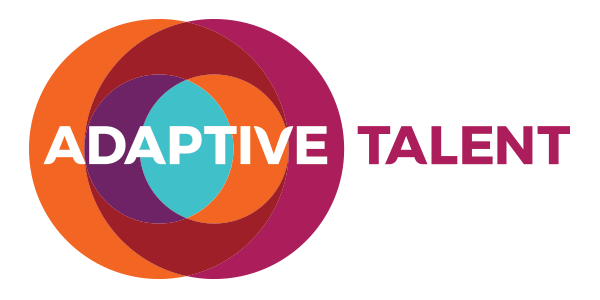Every organization needs to constantly improve the value it offers to customers or risk extinction. Our economic heartburn has caused many leaders to overreact and curtail many organizational activities when in reality they should be smartly investing in their future. I thought I’d offer some tips for leaders on how to rethink the way they evaluate investments and the resulting impact on long-term competitive differentiation.
Successful organizations smartly select an industry and identify a unique set of activities or outputs that set them apart from other organizations in the minds of customers. These processes involve people in specific roles using skills, knowledge, and experience (ie, the intangible or human capital) in combination with tools, equipment, assets (ie, the tangible or organizational capital) to produce a service or product. Different processes require different mixes of organizational and human capital, and also allow performance differences in individuals to have a wide range of impact on that process.
The problem for most organizations is that they don’t have a clear strategy or differentiation in the marketplace, and therefore lack a sense of the highest value processes and roles inside their organization. This lack of clarity means that investment analyses are generally too narrow or consider each possibility as equal, when in reality the organization would do dramatically better if certain processes and roles received a disproportionately larger amount of investment.
These critical processes comprise your organization’s core competency, although that term has been so overused that I’m reluctant to use it. Executives can struggle with this concept because they speak to characteristics, or outcomes, but have a more difficult time understanding what the customer truly values, how that compares and contrasts with competitors, how that value proposition must evolve, and how that translates into your operational goals for the year. If you don’t have this kind of clarity, you may end up over or under investing, or simply miss an opportunity completely. In addition, leaders lack a framework for comprehensively and simultaneously evaluating human and organizational capital investment options.
While I was at EA, we worked with the Capital H Group to create a framework to understand:
- The distribution of performance potential across certain roles: do extremes in performance matter equally across all roles, or do certain circumstances blunt the impact of notable performance variations?
- The degree of skill specificity required for certain roles: should supply and demand of certain skills matter in organizational investment decisions?
- The relative value contribution between individuals and organizational capital: as you evaluate whether to spend money on people or automation/technology, should your investment decisions consider which percentage was attributable to people versus technology or machines?
This is a very helpful way to analyze your current work processes and is fantastic input as you create your talent strategy. You can look at current state and how things must shift and allocate investment dollars and time accordingly. Let’s take a look at each of these decision filters to get a better sense of how they work:
Distribution of performance potential across certain roles
Categorize the roles inside your organization into three types. Ask your current or potential customers for their perspective on your core processes and key roles to see how they’d categorize the roles. You might be surprised!
Value Creators – When these folks are successful it has a huge upside impact on your company. A superstar software engineer in a software company is widely thought to add 6X the value of an average engineer; they have giant upside potential.
Value Protectors – When these employees screw up, it can drag the entire organization down. Easy examples are the patent attorney who does a bad job, the Health Inspector at the Peanut Factory who allows salmonella to infect the population, or the QA Specialist who doesn’t catch a bug and the product is panned as a result.
Required Roles – These people can be great but it’s really not going to matter all that much to the overall picture. A factory worker in a highly automated plant has a pretty narrow standard deviation to her performance, just like the call center employee where fantastic performance matters to a limited degree.
Note that all roles have duties that carry with it upside or downside risk, or are simply required so for simplicity categorize roles based at the activity level (ie, this role has more specialist aspects to it, so for ease of use categorize it as a Specialist role).
The degree of skill specificity required for certain roles
This second attribute clarifies how social capital (network of relationships and behavior within those relationships), knowledge capital (accumulated learning and experience) and technical capital (systems and processes) are required for certain roles inside your organization. The more specific or longer to acquire, the more valuable that skill is to your organization and presumably the more you’d want to invest in it to ensure you have adequate supplies. You could do this through talent development or through the open market via external recruiting. Let’s use the roles above to help us generalize some concepts:
Required roles – These are likely to be generic skills used to meet standard operating procedures that will generate a narrow performance distribution. The focus here is on utilization and efficiency.
Value protectors – These folks will have skills applicable across your industry but they become really valuable to you when you layer on organization specific knowledge, especially as it relates to protecting the most important customer processes or outcomes.
Value Creators – These people are your home run hitters. They’re creating the future so your services and products can continuously upgrade the value proposition offered to customers. These individuals are educated, connected, and experienced and leverage that knowledge to push boundaries.
The relative value contribution between individuals and organizational capital
Look at your most important processes and roles and think about what percentage of the value is through organizational capital versus human capital. The greater the percentage attributed to organizational capital, the more likely it is that you’ll want your investment decisions to focus on efficiency of assets. The more that human beings create the value, the more you’ll want to help them create value by getting them whatever they need (tools, coworkers, knowledge, protection from bureaucracy, etc). Let’s look at our roles again and make some broad generalizations about where the value originates:
Required Roles – Value is more likely to come from organizational capital than human capital. These roles have a low performance potential, which is why they’ll be more standard operating procedures, tools, and rules employed. Example: a line worker at the Coca-Cola bottling plant is probably a 95% organizational capital / 5% human capital value combination.
Value Protectors – Probably an even split between human and organizational capital, because discretion, aided by business specific knowledge and experience, must be employed effectively with organizational capital to avoid undesirable events from occurring. It’s rarely going to be just technology protecting value. Example: QA workers at a surgical products unit could easily be 50% organizational capital, 50% human capital.
Value Creators – Likely a much higher percentage attributed to human capital because they’re applying, sharing, and creating knowledge in new and unique ways that give the organization more options strategically. Investment banking may be 80% human capital and 20% organizational capital because the value comes from individuals analyzing the data and making decisions. Sure, they have to have fantastic IT set-ups but the value is created when their investment bankers are more correct than the other firms.
Note that as the world continues to become more technical, the floor, or minimum level of automation for any role is bound to increase, so this analysis must be contextual to your core process but also to other organizations (not just in your marketplace, by the way).
Key Take-Aways:
- Organizations constantly need to raise the value proposition they offer to customers
- Value propositions are a combination of processes, roles, skills, and organizational capital employed in specific ways that create value for customers and differentiate them from the competition.
- Leaders should analyze internal investment decisions at the process level and should examine roles in specific ways (value potential, skills specificity, and mix between organizational and human capital employed).
- This information should produce clarity on the highest value processes and roles for an organization which can then be the basis of your strategic HR plan, HR programs, or initiatives (like job or process redesign to maximize time spent on value creation activities). Too many organizations simply have generic leadership or talent programs when in reality they should be laser focused on key processes, roles, and individuals, helping them maximize their potential and performance.
This is the kind of strategic HR that CEOs should be demanding from their staff, but it’s especially urgent given the economic heartburn we’re dealing with. Now is not the time to stop all investments….but you do need to be really specific about what you’re investing in, base it on data, and then measure progress. Adaptive Talent’s Organizational Development consultants can help you with this exercise, and our retained search practice can help you find game-changing talent.
In my next post I’ll share some easy ways to use this framework for job and process redesign / improvement.


Hi Brad: I love your latest blog. I used accountabilities and the requisite organization philosophy to accomplish what it sounds like you did at EA. Your blogs are really interesting and I am sure your other readers are enjoying them as much as I am. Take care. Judy